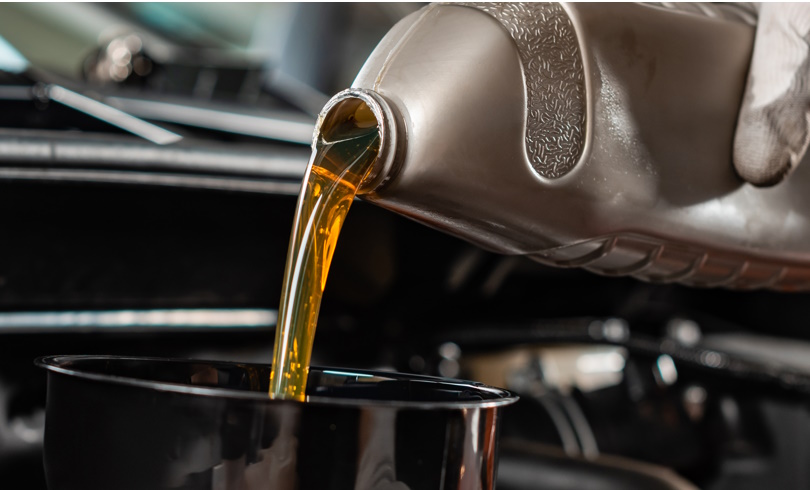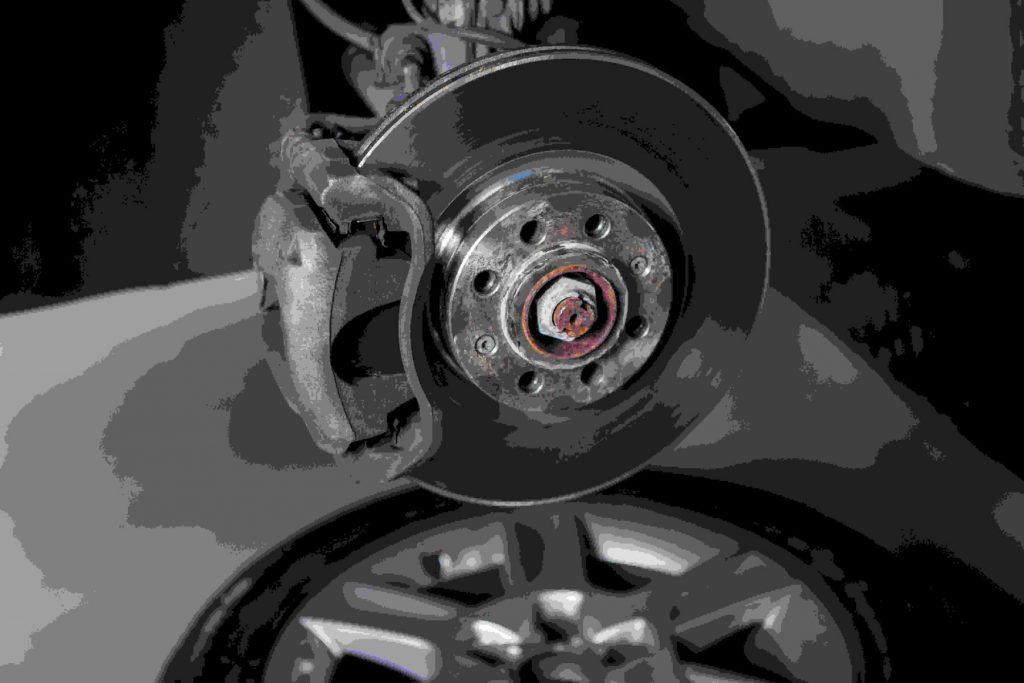It’s a scenario many Sharjah drivers have faced – you pull into a stop on a scorching day, the engine blazing hot from desert traffic, and realize your oil level is low. Maybe the oil pressure warning light flickered during your drive, or you checked the dipstick after a long trip and saw it below the minimum mark. The hood is popped and heat is radiating from the engine. Now you’re wondering: can you safely add oil to the engine while it’s this hot, or should you wait? We at Burj Malabar Auto Maintenance often hear this question from concerned motorists. In this article, we’ll explain why engine oil level is so critical (especially in Sharjah’s climate), whether it’s safe to add oil to a hot engine, and how to top up your oil safely if you need to.
Why Proper Oil Level Is Critical
Engine oil is the lifeblood of your car’s engine. It lubricates moving parts, reduces friction, and also aids in cooling the engine. If the oil level drops too low, the engine can quickly overheat or even seize up due to increased friction and lack of lubrication. In fact, running an engine with seriously low oil will start a “slow death” for the motor – you may first hear knocking or grinding noises, see excessive smoke, and experience overheating, until eventually critical components wear out or fail. It’s clear that driving with insufficient oil is far more dangerous to your engine than the act of adding oil. When that oil warning light comes on or the dipstick shows low, you should address it promptly.
Sharjah’s climate makes oil maintenance even more important. The extreme desert heat, combined with dusty conditions, puts extra stress on your engine oil and can cause it to degrade more quickly. High temperatures thin out the oil and can accelerate oil breakdown, meaning your car might consume or burn oil faster than in cooler climates. Dust and sand can also contaminate oil and clog filters, further reducing oil effectiveness. All of this means Sharjah drivers need to be vigilant: check your oil regularly and don’t ignore low readings. It’s good practice to inspect oil levels before long drives or road trips, especially in summer. If you do find your oil level low while on the road, topping it up can prevent a minor issue from turning into a major engine problem.
Is It Safe to Add Oil When the Engine Is Hot?
Many of us were taught that adding oil to a hot engine is dangerous – you might have heard warnings about cracking the engine block or causing a fire. Is there any truth to these concerns today? The short answer: adding oil to a warm or moderately hot engine is generally safe for the engine itself, but there are some important caveats regarding personal safety and proper procedure.
Modern Engines Can Handle It: In older engines with heavy cast iron blocks, pouring cold oil into a very hot engine gave rise to fears of “thermal shock” – the idea that a sudden temperature change could warp or crack metal. However, with today’s engines and oils, this is largely old-school advice. Topping up oil in a warm engine is not likely to crack anything. Modern engines are built with tighter tolerances and modern oil formulations are far more stable at high temperatures than the oils of decades past. In other words, your engine won’t be damaged just by adding some room-temperature oil even if the engine is hot. Automotive experts confirm that adding a small amount of cool or room-temp oil to an operating-temperature engine usually won’t cause catastrophic thermal shock to the metal. So mechanically speaking, you do not need to wait hours for the engine to go stone-cold before adding oil.
Extreme Heat vs. Warm Engine: That said, there’s a difference between a normal hot engine and an extremely hot engine. If your engine has just been pushed to its limits (for example, climbing Sheikh Khalifa Bin Zayed Road in peak afternoon heat or coming off a high-speed highway run) and is overheated or “heat-soaked,” it’s wise to wait a few minutes before pouring in oil. In rare cases, pouring relatively cool oil into an overly hot engine could cause a mild thermal shock to metal components (the chances are low, but not zero). The oil itself won’t catch fire – engine oil’s flash point is high – but extremely hot metal rapidly cooled by cooler oil could theoretically lead to hairline warping. However, under normal operating temperatures this isn’t a big concern. If the engine is simply at normal operating temp (90–100°C) and not overheating, you can add oil without fear of cracking the block. Just use common sense: if the engine was overheating or you saw smoke/steam, it’s better to let it cool down a bit first.
Safety First – Burns and Spills: The primary concerns with adding oil to a hot engine are about you and your car’s safety, not the engine’s internals. Under the hood, many components are extremely hot after driving. Touching the engine block, exhaust manifold, or even the oil filler cap and dipstick can cause burns if you’re not careful. There’s also a risk of spilled oil hitting hot surfaces. Oil spilled on a hot exhaust manifold or other surface can smoke and even ignite in some cases. For this reason, if you must add oil when the engine is hot, you should take precautions (we’ll detail those in the next section). Always turn the engine off before adding oil – never pour oil into an engine that’s running or you risk oil splashing onto moving, hot parts (very dangerous and inaccurate for measuring).
Dipstick Reading Accuracy: Another reason mechanics often say to wait is to get an accurate oil level reading. When you shut off a hot engine, a lot of oil is still up in the engine’s passages and has not drained back to the sump yet. If you check the dipstick immediately, it may show the level lower than it truly is. This could mislead you into adding too much oil. Overfilling the oil is harmful – it can cause oil foaming, increased crankcase pressure, and seal leaks. That’s why the best practice is to wait ~10 minutes after shutting off a hot engine before measuring or adding oil. In 10-15 minutes, most of the oil will settle back into the pan, giving a true reading and reducing the chance of overfill. (Some sources even suggest waiting 20-30 minutes for full peace of mind, but a 10-minute pause is generally sufficient in most cases.) In fact, many car manufacturers specify checking oil when the engine is warm (not completely cold) but after a brief rest. For example, certain models like the Toyota RAV4 and Acura TSX instruct owners to check oil with a warm engine, emphasizing that you should follow your owner’s manual for the recommended method. Warm and settled oil gives an accurate level and reflects the engine’s typical operating condition.
Bottom Line: Yes – you can add oil to a hot engine without damaging it, as long as the engine is turned off. The urgent priority is to ensure your engine has enough oil rather than risking running with too little. However, it’s best to wait a few minutes after shutdown so things aren’t scorching hot and your dipstick reading is accurate. If the oil level is clearly below the safe mark, a small top-up right away won’t hurt the engine – just be cautious doing it. If you’re not in an emergency, taking a short break (grab a karak tea at the petrol station while the car sits, perhaps) is wise. The short wait is mainly for your safety and measurement accuracy, not because the engine can’t handle the oil. Below is a quick comparison of adding oil immediately versus waiting:
Topping Up Oil: Hot Engine vs. Cooled Engine
| Scenario | Hot Engine (Just Shut Off) | Cooled Engine (After Some Wait) |
|---|---|---|
| Personal Safety | High caution: engine parts and oil cap are very hot – risk of burns. Use gloves or a rag when handling caps/dipstick. Oil spills may smoke or ignite on hot surfaces. | Much safer: engine has cooled to a warm or ambient temperature, greatly reducing burn risk. Spilled oil still needs cleaning but is less likely to burn. |
| Oil Level Reading | Less accurate immediately after shutdown – oil is still draining to the pan, so dipstick may show artificially low level. This could lead to overfilling if you add too much too soon. | More accurate after ~10+ minutes – oil has fully settled in the pan, so dipstick reflects true level. Easier to judge how much to add without overfilling. |
| Engine Impact | No serious harm to engine from adding a small amount of oil. Modern engines/oils handle it. Exception: if engine was extremely hot (overheating), avoid pouring cold oil in immediately – let it cool slightly. | No harm – adding oil to a warm or cool engine is standard practice. In fact, warm oil flow helps distribute the new oil quickly. |
| Recommended Action | If oil is critically low (warning light on, little oil on dipstick) and you cannot wait, you can add oil carefully after turning the engine off. Add in small increments, and don’t let the engine run during the process. Take precautions (gloves, funnel, slow pour). | Ideally, plan oil top-ups when you can park and wait ~10-20 minutes. This is the safest and most accurate way. Check the level, then add oil as needed. For routine maintenance, this approach avoids any rush or risk. |
As you can see, the engine itself will not be harmed by adding oil when it’s hot, but you must be careful. If the situation isn’t an emergency, it’s safer to wait for the heat to subside a bit. On the other hand, if you’re in the middle of nowhere on a Sharjah highway and that oil light comes on, it’s better to carefully add a little oil (if you have some) while hot than to drive with no oil. The key is using caution and adding only what’s needed.
How to Safely Top Up Engine Oil (Step by Step)
If you determine that your engine needs an oil top-up, follow these best practices to do it safely and correctly. At Burj Malabar Auto Maintenance, we recommend the following steps for adding engine oil, whether the engine is hot or cool:
- Park Safely and Turn Off the Engine: Pull over to a safe, level location. Put the car in park (or neutral with the handbrake on) and turn off the engine. Never try to add oil to an engine that is running – not only is it dangerous, but you’ll get an inaccurate reading. A level surface ensures the oil reading won’t be skewed.
- Let It Sit a Few Minutes (If Possible): If the engine was at normal running temperature, wait about 5–10 minutes before doing anything. This brief pause allows hot oil to start draining back to the oil pan and also lets some of the extreme heat dissipate. (If you can’t afford to wait long, even 2-3 minutes is better than nothing to reduce surface temperatures slightly.)
- Use Caution Opening the Hood and Cap: Carefully pop the hood using a cloth or gloves if the release latch is hot. Expect a blast of heat from the engine bay. When you locate the oil filler cap, use a rag or heat-resistant glove to touch and turn it, as it may be very hot. Open the cap slowly and keep your face back – on a very hot engine, a small amount of oil vapor or pressure might escape as you loosen the cap. (Note: If you see any signs of boiling over or feel extreme heat, it’s a sign to wait longer.)
- Check the Oil Level Properly: Pull out the dipstick (it’s usually a colored loop or handle labeled OIL). Wipe it clean with a paper towel or cloth, then insert it fully back into its tube and pull it out again to check the level. This ensures you’re reading the current level accurately. Observe where the oil film reaches on the dipstick – between the “min” and “max” markers? If it’s near or below the minimum line, you definitely need to add oil. If it’s just slightly low, adding a small amount is still helpful, but avoid overfilling above the “max” line.
- Add the Correct Oil Slowly: Locate the oil filler opening (usually on top of the engine, often marked with an “oil” or outline of an oil can symbol). Place a funnel in the opening to prevent spills. Pour a small amount of the proper grade oil (check your owner’s manual for the right viscosity, e.g. 5W-30) into the engine. Start with a little – maybe a quarter of a liter (250 ml) – rather than dumping a whole bottle at once. Pour slowly and steadily to avoid any splashing. The existing oil in the engine is hot, which will help the new oil flow in easily.
- Wait and Re-check the Level: Give the new oil a minute to settle, then wipe and check the dipstick again. You should see the level rising. If it’s still below the halfway mark between min and max, add another small increment of oil and check again. Repeat until the dipstick shows the oil level in the safe range. Do not overfill thinking “more is better” – overfilling can cause its own set of engine problems, like foaming and seal damage.
- Secure the Cap and Clean Up: Once you’re satisfied the oil level is correct, securely replace the oil filler cap. Double-check that the dipstick is fully reinserted. If you spilled any oil on the engine or nearby components, wipe it up thoroughly. This prevents burning oil smells or fire hazards when you start the engine later. In Sharjah’s heat, even a small oil spill can smoke as it burns off, so take a moment to clean any drips.
- Monitor the Oil Light and Engine: Start your car again and make sure the oil pressure warning light goes off (or that it doesn’t flicker). If the light remains on after adding oil, or if you had to add a significant amount (indicating you were very low), it’s wise to have your vehicle checked for leaks or oil consumption issues. Keep an eye on the oil level over the next few days. In a hot climate, also remember to change your oil at regular intervals – oil breaks down faster in UAE weather, so timely oil changes and using high-quality oil can save you from frequent top-ups.
By following these steps, you’ll ensure that you safely top off your engine oil without any mishaps. Always refer to your vehicle’s manual if you’re unsure about the oil type or any specific procedures for your car. And if the engine was extremely hot or you feel uneasy performing the task, wait for the engine to cool more or call a professional for help – your safety comes first.
Top Up with Confidence and Stay Safe
Dealing with a low oil situation in the middle of Sharjah’s heat can be stressful, but with the right approach, you can handle it confidently. The key takeaways are that adding oil to a hot (but turned-off) engine is usually safe for the car, and it’s certainly better than running an engine with too little oil. The old horror stories about cracking an engine block are largely myths in modern cars. Just remember to give the engine a short breather whenever possible, handle everything with care, and avoid overfilling. Always prioritize your own safety by avoiding burns – use gloves or wait a bit longer if needed.
At Burj Malabar Auto Maintenance, we have seen time and again that a little preventative care goes a long way in protecting your engine. Our goal is to keep Sharjah drivers’ vehicles running smoothly and reliably, even under extreme weather conditions. We hope this guide has demystified the process of topping up oil when the engine is hot, so you won’t be caught off guard next time the situation arises. With proper oil maintenance and safe top-up practices, you can ensure your engine stays healthy on the roads of Sharjah. Safe driving, and remember – we’re here to help with any oil checks, changes, or engine concerns whenever you need professional assistance!



